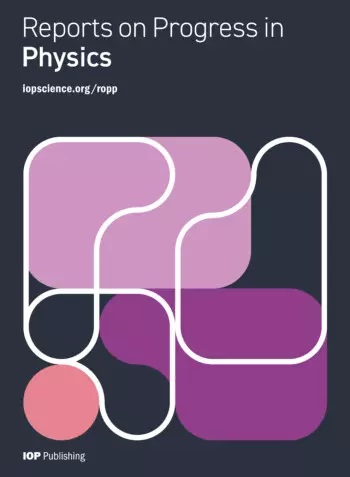Geometric phases in 2D and 3D polarized fields: geometrical, dynamical, and topological aspects
IF 20.7
1区 物理与天体物理
Q1 PHYSICS, MULTIDISCIPLINARY
引用次数: 78
Abstract
Geometric phases are a universal concept that underpins numerous phenomena involving multi-component wave fields. These polarization-dependent phases are inherent in interference effects, spin–orbit interaction phenomena, and topological properties of vector wave fields. Geometric phases have been thoroughly studied in two-component fields, such as two-level quantum systems or paraxial optical waves. However, their description for fields with three or more components, such as generic nonparaxial optical fields routinely used in modern nano-optics, constitutes a nontrivial problem. Here we describe geometric, dynamical, and total phases calculated along a closed spatial contour in a multi-component complex field, with particular emphasis on 2D (paraxial) and 3D (nonparaxial) optical fields. We present several equivalent approaches: (i) an algebraic formalism, universal for any multi-component field; (ii) a dynamical approach using the Coriolis coupling between the spin angular momentum and reference-frame rotations; and (iii) a geometric representation, which unifies the Pancharatnam–Berry phase for the 2D polarization on the Poincaré sphere and the Majorana-sphere representation for the 3D polarized fields. Most importantly, we reveal close connections between geometric phases, angular-momentum properties of the field, and topological properties of polarization singularities in 2D and 3D fields, such as C-points and polarization Möbius strips.二维和三维极化场的几何相位:几何、动态和拓扑方面
几何相位是一个普遍的概念,支持许多涉及多分量波场的现象。这些与极化相关的相位是干涉效应、自旋轨道相互作用现象和矢量波场拓扑特性所固有的。几何相位在双分量领域,如双能级量子系统或近轴光波中得到了深入的研究。然而,它们对具有三个或更多分量的场的描述,例如现代纳米光学中常规使用的一般非傍轴光场,构成了一个非平凡的问题。在这里,我们描述了在多分量复杂场中沿封闭空间轮廓计算的几何相位、动态相位和总相位,特别强调了二维(近轴)和三维(非近轴)光场。我们提出了几个等价的方法:(i)一个代数形式,对任何多分量域都是通用的;(ii)利用自旋角动量和参照系旋转之间的科里奥利耦合的动力学方法;(iii)一个几何表示,它统一了庞加莱球上二维偏振的Pancharatnam-Berry相位和三维偏振场的Majorana-sphere表示。最重要的是,我们揭示了几何相位、场的角动量性质和二维和三维场中极化奇点(如c点和极化Möbius条)的拓扑性质之间的密切联系。
本文章由计算机程序翻译,如有差异,请以英文原文为准。
求助全文
约1分钟内获得全文
求助全文
来源期刊

Reports on Progress in Physics
物理-物理:综合
CiteScore
31.90
自引率
0.00%
发文量
45
审稿时长
6-12 weeks
期刊介绍:
Reports on Progress in Physics is a highly selective journal with a mission to publish ground-breaking new research and authoritative invited reviews of the highest quality and significance across all areas of physics and related areas. Articles must be essential reading for specialists, and likely to be of broader multidisciplinary interest with the expectation for long-term scientific impact and influence on the current state and/or future direction of a field.
 求助内容:
求助内容: 应助结果提醒方式:
应助结果提醒方式:


